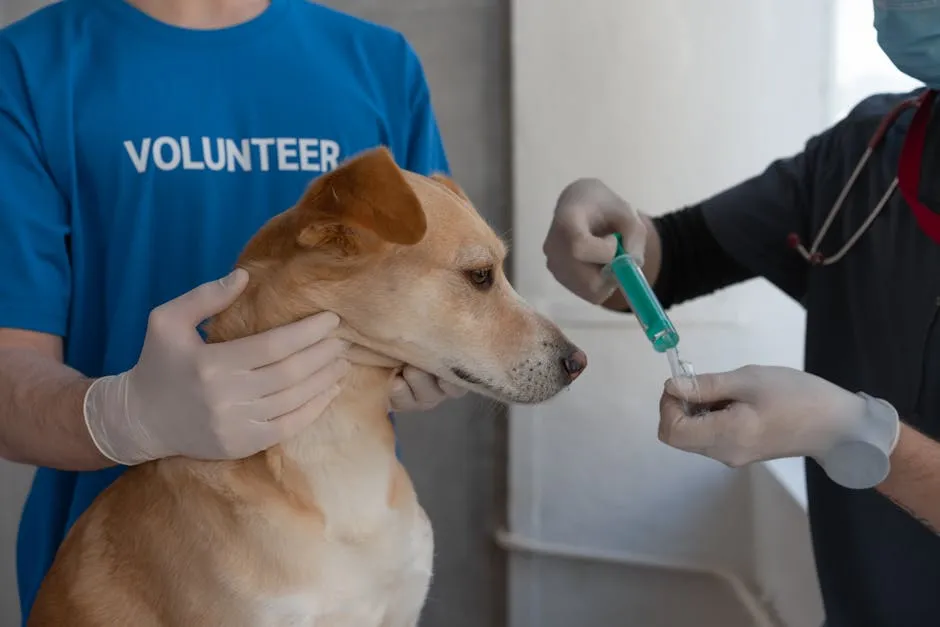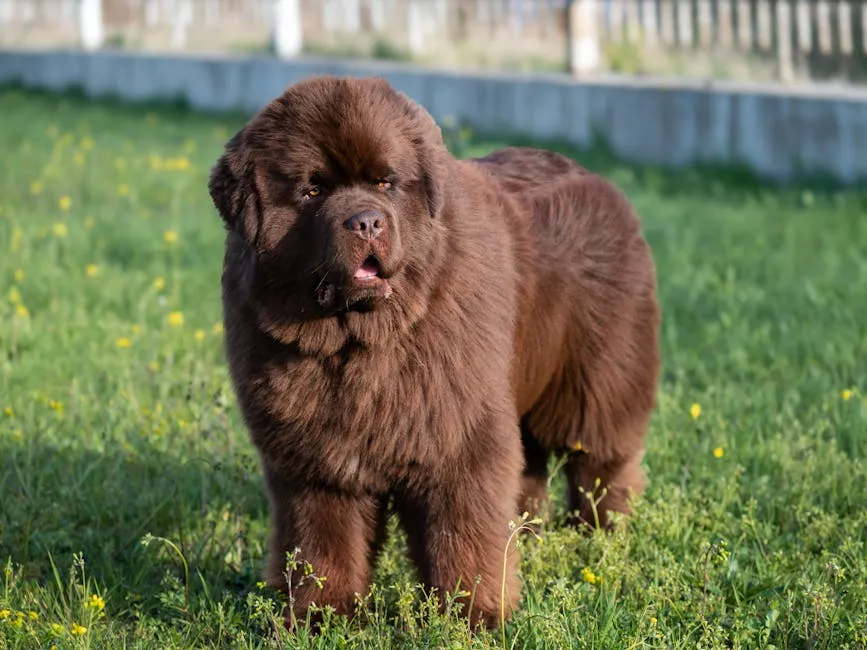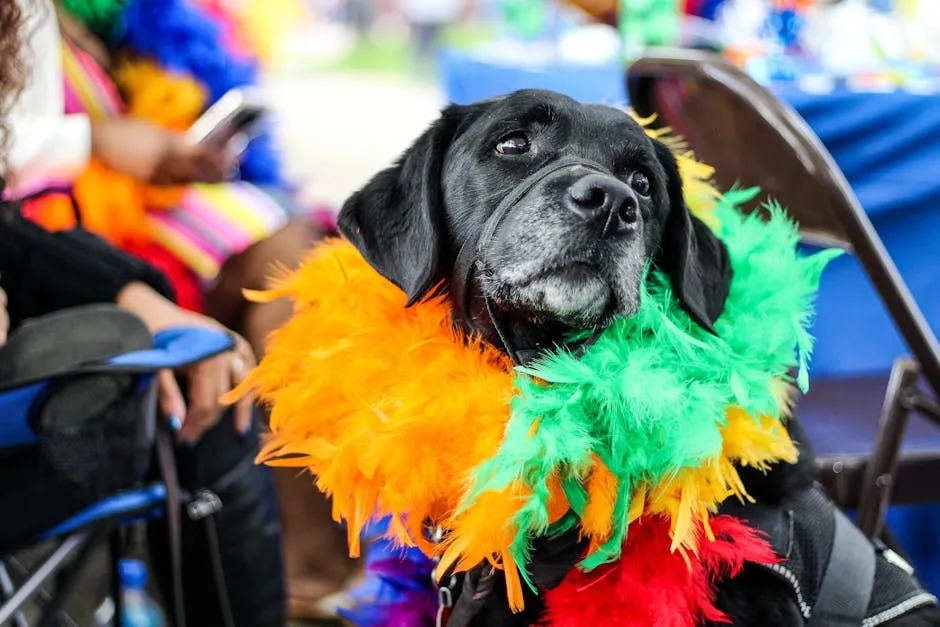Introduction
In a world full of dog breeds, the Newfoundland dog stands out as a gentle giant with a heart as big as its frame. Known for their impressive swimming abilities and nurturing temperament, these fluffy companions are more than just pets; they’re family members, lifeguards, and even heroes.
Originating from Newfoundland Island, these dogs were developed from crosses between native canines and the Great Pyrenees brought to North America by Basque fishermen in the 17th century. Their historical significance includes remarkable feats in water rescues and assisting fishermen. These dogs have an innate love for water, making them exceptional swimmers capable of saving lives.
Newfoundlands are often referred to as “nanny dogs” due to their affectionate nature. They are not just large; they are also incredibly friendly and patient, especially with children. Imagine a dog so big yet so gentle that it becomes a child’s best friend, a guardian angel in furry form.
In this comprehensive guide, we will explore everything you need to know about these magnificent dogs. We’ll cover their care, costs, temperament, and much more. Whether you’re a potential Newfie owner or simply curious about this breed, we have all the information you need.
So, grab a cup of coffee, settle in, and let’s embark on this delightful journey into the world of Newfoundlands! Discover their unique characteristics and why they may just be the perfect addition to your family. Who knows? You might find yourself head over paws for these gentle giants!
Understanding Newfoundland Dogs
Origin and History
Newfoundland dogs have a rich history that begins on Newfoundland Island. Bred from a mix of local canines and the Great Pyrenees, these dogs emerged in the 17th century. Basque fishermen brought the Great Pyrenees to North America, and this blend resulted in the lovable Newfies we adore today.
Originally, Newfoundlands served various vital roles. They were invaluable to fishermen, helping pull nets and retrieve fish from the icy waters. Their impressive swimming skills made them natural water rescuers. Picture this: a fisherman slips from his boat, and who comes to the rescue? A Newfoundland, of course!
These dogs were not just workers; they were essential for survival. Their strength and swimming capabilities earned them a reputation as lifesavers. Stories abound of Newfoundlands rescuing people from drowning. They have saved countless lives, proving their mettle in the harsh conditions of the North Atlantic. Their history is steeped in heroism, and they continue to be celebrated for their water rescue skills today.
Over time, their gentle and loving nature led to their adoption as family pets. Newfoundlands soon transformed from hard-working canines to cherished family members. Their affectionate disposition, combined with a remarkable ability to bond with children, has solidified their place in many households. Today, they are known as “nanny dogs,” thanks to their protective instincts and gentle demeanor.
In short, the history of Newfoundland dogs is a testament to their versatility and unwavering loyalty. From rugged working dogs to loving family companions, Newfoundlands have truly earned their place in our hearts.

Care and Upkeep
Dietary Needs: Newfoundlands require a well-balanced diet to support their large frames. High-quality dog food is essential. Look for foods rich in protein and healthy fats. A typical Newfoundland might need about 4-5 cups of food daily, split into two meals. Don’t forget to adjust portions based on age, weight, and activity level. Consider trying high-quality dog food that provides the necessary nutrients to keep your Newfie healthy and happy.
Exercise: While Newfoundlands are not hyperactive, they need regular exercise. Daily walks and playtime are crucial. These dogs thrive in water, so swimming is a fantastic way to keep them happy! Just don’t overdo it; moderate activities work best for these gentle giants.
Grooming: Grooming is vital for Newfoundlands, especially because of their thick coats. Brush them at least once a week, and more often during shedding seasons. This helps reduce shedding and keeps their fur looking fabulous. Bathing should be done every few months or as needed. Use dog shampoo for sensitive skin to keep their coat healthy and shiny.
Health Issues: Like many large breeds, Newfoundlands can face health challenges. Common issues include hip dysplasia and gastric torsion. Regular vet check-ups can catch problems early. Feed a balanced diet and maintain a healthy weight to prevent joint issues. Consider preventive measures like avoiding strenuous exercise right after meals to minimize the risk of bloat.
Taking care of a Newfoundland is a rewarding experience. Their gentle nature makes them a joy to have around, and with proper care, they can lead happy, healthy lives.

Temperament and Behavior
Newfoundlands are known for their sweet and gentle demeanor. They are incredibly affectionate and can form strong bonds with family members. Their calm nature makes them perfect for families with children. Imagine a giant dog who’s also a patient playmate; that’s a Newfoundland for you!
Training these lovable giants can be a breeze, thanks to their intelligence. They respond well to consistent commands and positive reinforcement. Socialization is key, so introduce them to various environments and other pets early on. This helps prevent any unnecessary anxiety or overprotectiveness.
Unique behaviors often emerge in Newfoundlands. They have a tendency to watch over children, earning them the nickname “nanny dogs.” Their protective instincts shine through, making them excellent guardians. You might find your Newfie sticking close to the kids, always ready to lend a paw. To enhance training, consider using a training clicker for dogs to reinforce positive behaviors.
With their playful spirit and gentle nature, Newfoundlands bring joy to any household. Their unique blend of affection and loyalty makes them truly special companions. Whether they’re splashing in the water or lounging on the couch, these dogs know how to steal your heart!

Costs of Owning a Newfoundland
Owning a Newfoundland dog can be a delightful adventure, but it’s essential to consider the costs involved. These gentle giants may steal your heart, but they also come with a price tag that can vary based on several factors.
Initial Purchase Costs: If you’re looking to add a Newfoundland to your family, expect to spend between $500 and $2,500. The price range is influenced by various factors. Breeders with champion lineages or those who focus on show-quality pups often charge more. Additionally, a breeder’s reputation, the dog’s age, and even coat color can impact the cost. Rescuing a Newfoundland is often more budget-friendly, with adoption fees typically ranging from $300 to $400. These fees usually cover initial care expenses, making it a win-win! Tips for socializing rescue dogs with fear issues can be helpful if you adopt.
Monthly Expenses: Once your Newfie is home, monthly expenses will kick in. Food can cost around $100 to $120, as these dogs require about 4-5 cups of high-quality kibble daily. Grooming is another essential aspect, with costs averaging between $50 and $100. Their thick coats need regular brushing, especially during shedding season. A dog grooming brush can help keep their coat in tip-top shape.
Veterinary care is crucial for Newfoundlands, given their predisposition to certain health issues. Routine vet check-ups may set you back $100 to $300 per visit. Don’t forget pet insurance, which can range from $40 to $120 monthly, depending on coverage.
Long-Term Financial Commitment: When estimating the total cost of ownership, think long-term. Over a typical lifespan of 8-12 years, you might spend between $18,000 and $25,000. This estimate includes food, grooming, veterinary care, and other expenses. Of course, unexpected health issues can arise, adding to this figure.
In summary, owning a Newfoundland dog is a significant commitment, but the joy they bring into your life is invaluable. Prepare your wallet and your heart, as these gentle giants will surely become cherished family members!

Color Genetics
Understanding the color genetics of Newfoundland dogs is as fascinating as it is essential. These dogs come in various stunning colors, each with its genetic background. Understanding canine color genetics and coat patterns can provide deeper insights into their appearance.
Newfoundlands can display eight main colors: black, black and white (known as Landseer), grey, grey and white, brown, brown and white, beige, and beige and white. These colors come from two primary genetic bases: black and brown. The black color, denoted as either BB or Bb, is dominant, while the brown is recessive (bb). It’s crucial to note that brown is not a variant of black; it stands alone.
Modifier genes play a key role in color variations. For example, a dilute modifier gene can change black to grey and brown to beige. However, not all colors are accepted in show rings. Acceptable show colors include black, brown, grey, and Landseer. Non-standard colors can be registered but are often excluded from conformation classes.
Historically, the color palette of Newfoundlands evolved over time. In the Victorian era, records showed primarily black and white or brown and white dogs. The term “Landseer Newfoundland” comes from Sir Edwin Landseer, who famously painted the black and white variety.
Interestingly, there’s ongoing debate about the rarity of certain colors. Some breeders argue that with knowledge and effort, these “rare” colors could be produced more widely. However, misconceptions about non-standard colors often create stigma, leading to unethical breeding practices.
In summary, knowing about Newfoundland color genetics enriches your understanding of this breed. Embracing all colors fosters a more accepting community and promotes responsible breeding practices. Whether you prefer a classic black Newfie or a striking Landseer, each color brings its own charm and beauty.

Fun Facts and Trivia
Newfoundlands aren’t just adorable; they have a rich history filled with fascinating anecdotes! For instance, did you know that a Newfoundland reportedly saved Napoleon Bonaparte from drowning back in 1815? Talk about a heroic pup! This breed has also made its mark in pop culture. Seaman, the loyal Newfoundland, accompanied Lewis and Clark on their expedition, proving that these dogs are not only great companions but also excellent adventurers.
But the fun doesn’t stop there! Newfoundlands are famous for their swimming abilities. Their webbed feet and powerful builds make them exceptional swimmers. They can easily paddle through choppy waters, often rescuing people in distress. In fact, they have earned the title of “world’s best rescue dogs.” Imagine a Newfie leaping into the waves to save a struggling swimmer—now that’s a scene straight out of a heartwarming movie!
Another quirky fact: Newfoundlands have a unique way of saving lives. They are known to instinctively swim to a person in trouble and then gently grab them by the hair or clothing to drag them to safety. With their strength and gentle nature, they truly embody the spirit of a hero.
In addition to their heroic acts, Newfoundlands are also known for their drool—yes, you heard that right! These gentle giants can produce quite a bit of slobber, especially after a refreshing swim or a hearty meal. But who can resist those sweet, droopy faces? Their endearing personality and remarkable abilities make Newfoundlands unforgettable companions.
So whether they’re saving lives or simply looking for a cuddle, Newfoundlands are truly one-of-a-kind dogs with a legacy that’s both entertaining and inspiring. And if you want to show off your love for this breed, how about sipping your morning coffee from a dog-themed coffee mug? Perfect for dog lovers!

FAQs
Conclusion
In conclusion, Newfoundland dogs are not just large breeds with impressive abilities; they are loving companions that can enrich any home with their gentle nature and loyalty. Owning a Newfoundland requires commitment in terms of time, effort, and finances, but the love and joy they bring into your life are undoubtedly worth it.
These gentle giants thrive in family settings, often forming strong bonds with children. Their calm demeanor and protective instincts make them excellent playmates and guardians. Newfoundlands are also known for their patience, ensuring that even the most boisterous child is met with a gentle paw, rather than a woof of discontent.
However, it’s essential to understand that these dogs require regular exercise, grooming, and veterinary care. Their thick coats need brushing to manage shedding, and their size means that the costs associated with food and healthcare can be significant. Yet, the unconditional love they offer can outweigh these financial commitments. You might also want to invest in a large dog bed for those cozy snuggles!
Whether you’re considering bringing a Newfie into your home or just looking to learn more about this magnificent breed, understanding their needs and history will prepare you for a rewarding experience with these gentle giants. They may require more attention and care than smaller breeds, but their loyalty and affection create a bond that lasts a lifetime.
If you’re ready for a furry friend that’s both a cuddle buddy and a water rescue hero, a Newfoundland might be the perfect companion for you. So, roll up your sleeves, prepare your heart, and get ready to welcome a Newfie into your life. You won’t just gain a pet; you’ll gain a wonderful family member who brings joy and laughter into every day!
Please let us know what you think about our content by leaving a comment down below!
Thank you for reading till here 🙂
All images from Pexels




